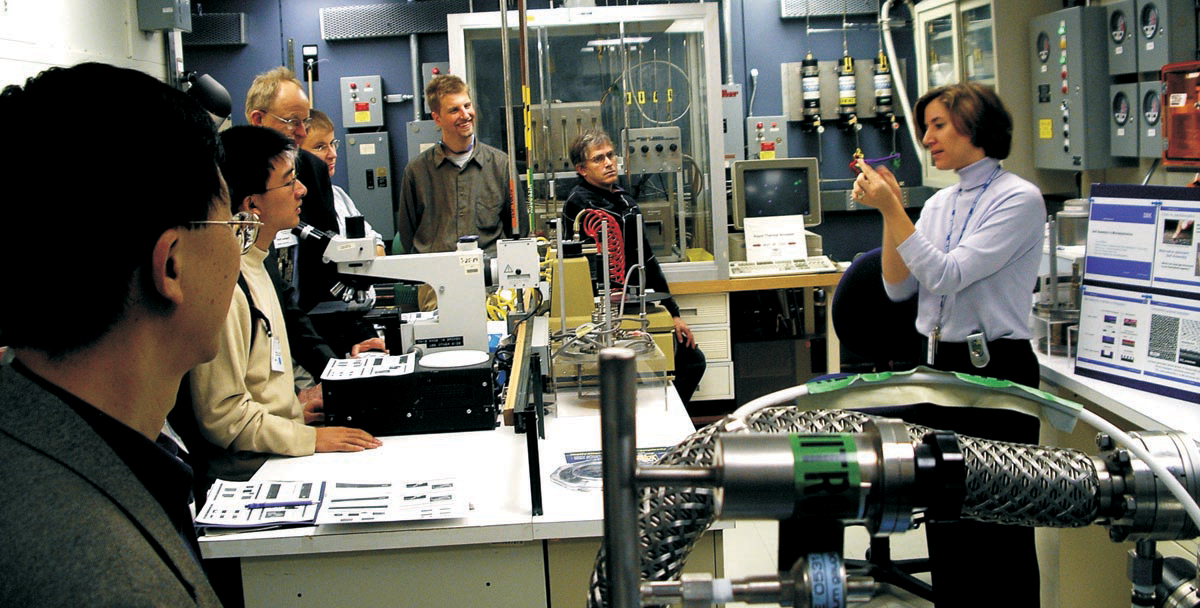Industrial Physics Forum Spotlights the Information Technology Revolution
DOI: 10.1063/1.1878330
Quantum computing, the evolution of microelectronics, and the interface of nanotechnology with supramolecular chemistry and biology were just a few of the issues discussed over three days at the 2004 Industrial Physics Forum and its academic–industrial workshop, held 24–26 October at the IBM T. J. Watson Research Center in Yorktown Heights, New York.
The annual meeting was sponsored by the corporate associates of the American Institute of Physics (AIP), The Industrial Physicist , and the American Physical Society’s Forum on Industrial and Applied Physics. The daylong preconference workshop focused on engineering education and opened with a keynote address by Norman Fortenberry, director of the center for the advancement of scholarship in engineering education at the National Academy of Engineering in Washington, DC. The workshop included presentations and roundtable discussions on such topics as the future of electrical and computer engineering and sustaining engineering education through research.
The forum’s theme, “Sustaining the Information Technology Revolution,” was tied in part to the research at IBM, and it opened in an auditorium at the IBM facility with a talk by Paul Horn, the corporation’s senior vice president of research. “We’ve had to reinvent ourselves multiple times,” he said of IBM. “We’ve had to embrace new technology that has disrupted our business model.”
Throughout IBM’s economic ups and downs, which Horn described as a series of “near-death experiences,” the company’s research division has always been “part of the solution, not the problem.” Noting that IBM has spent the past five years developing Blue Gene, its new ultrafast supercomputer, he said technology companies should remember that “the business community isn’t averse to risk, the business community is averse to not making money.”
Forum participants toured research labs at the Yorktown facility and were briefed on work ranging from large-scale simulation of biological systems and carbon nanotube electronics to picosecond imaging for circuit analysis and siliconintegrated nanophotonics.
The AIP Andrew Gemant Award, which recognizes significant contributions to the cultural, artistic, or humanistic dimension of physics, was given this year to Alan Friedman, director of the New York Hall of Science. Friedman said he’d spent much of his career learning how “physics connects to life,” and those lessons are reflected in exhibits in the Hall of Science.
Next year’s forum will be hosted by NIST in Gaithersburg, Maryland.

IBM scientist Kathryn Guarini explains her work in self-assembly in microelectronics to forum participants.
JIM DAWSON

More about the Authors
Jim Dawson. American Center for Physics, One Physics Ellipse, College Park, Maryland 20740-3842, US .




